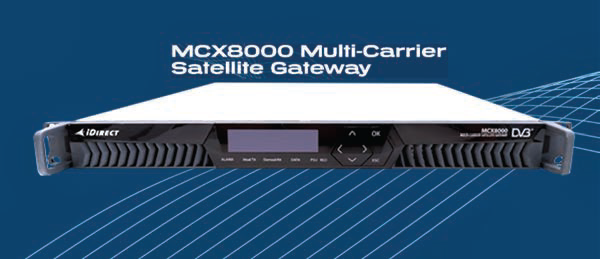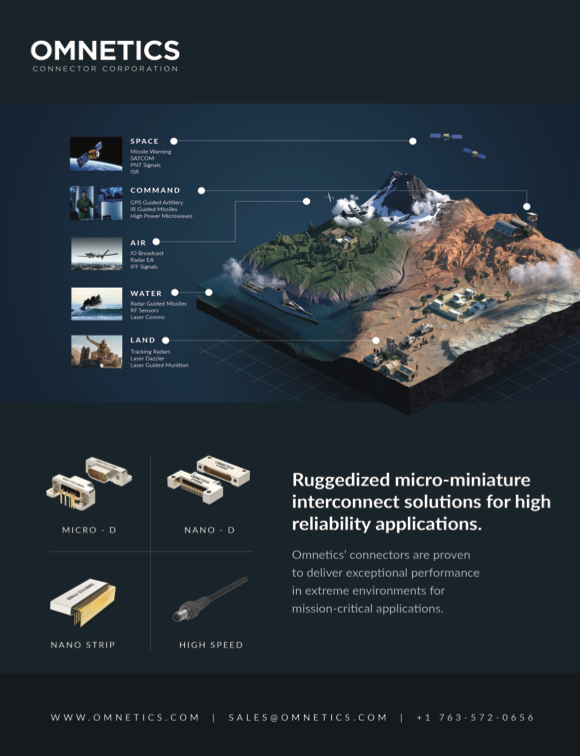Don Claussen is Chief Executive Officer of ST Engineering iDirect, a global leader in satellite communications (satcom). Prior to joining ST Engineering iDirect, Claussen was a Vice President at Intelsat General Corporation responsible for strategy, business development, product management and service delivery. During his tenure at Intelsat General Corporation, he aligned the Product Development and Service Delivery teams to launch a Multi-Orbit SATCOM capability Don Claussen providing end users seamless access to GEO and LEO SATCOM services from a single user interface.

With more than 15 years of technology leadership positions, Claussen served as a general manager of portfolio businesses at Viasat and L3Harris Technologies where he successfully led business growth, organizational change, and business integration. He also has held technical positions in various technology companies and has designed and deployed SATCOM systems for commercial and government customers.
A veteran of the U.S. Army with eight years of active service, Claussen holds an MBA from Northeastern University and a Bachelor of Science Degree from Colorado Technical University in Business Administration & Management, and has attended Executive Leadership Courses at the University of Southern California and the University of Pennsylvania.
ST Engineering iDirect is reorienting itself for new market dynamics and there has been talk of an upcoming announcement of a next-generation brand at SATELLITE 2024. Can you provide more details on the significance of this for the evolving market?

Don Claussen
The upcoming unveiling at SATELLITE 2024 is a pivotal moment. The significance lies not only in the unveiling of a new platform, but in us presenting our vision for the future of the industry and the evolution of ST Engineering iDirect.
We have merged the strengths of the Newtec and iDirect product lines to create a next-generation platform that is tailored to meet the needs of the rapidly changing market.
This next-gen offering is designed to address critical aspects such as multi- orbit integration, streamlined satellite network deployment, and the ability to deploy highly flexible networks at scale. Networks that, over time will interoperate effortlessly with multi-domain services and synchronize perfectly across a wide range of end-user, carrier, satellite operator, and ground segment systems.
In a market where agility and speed are becoming increasingly crucial, our focus on streamlining and integrating the satellite network is imperative to enhance operational efficiency, reduce costs, and accelerate time-to-market for satellite-based services.
Industry standards are a focal point for ST Engineering iDirect. Can you elaborate on the advantages of having an industry united under common standards and share your insights on the timeline for achieving this unity?
Don Claussen
Embracing industry standards is fundamental for achieving interoperability and unlocking the full potential of satellite communications. Drawing from the success of mobile cellular operator model, our goal is to implement standards that facilitate seamless network operation.
While the timeline for achieving industry-wide standardization remains uncertain, ST Engineering iDirect is actively spearheading this initiative. Our plan involves introducing standards throughout our product and demonstrating their feasibility through proofs of concept.
Standardization also facilitates economies of scale. With standardized components and protocols, manufacturers can produce equipment more efficiently, reducing costs and making satellite communication more accessible. This accessibility is crucial, especially as the industry evolves, and satellite communication becomes increasingly integrated into everyday life and diverse sectors.
However, achieving this unity in standards is not without its challenges. The satellite industry, like many others, has historical silos and proprietary technologies that have impeded seamless collaboration. With our Next Generation Platform, we are creating a space where standards and perability can prosper.
What challenges do you foresee in achieving this goal, and how does ST Engineering iDirect plan to navigate these challenges while staying ahead of the curve?
Don Claussen
The main challenge in the satellite industry revolves around breaking down the silos that have persisted for years. It involves overcoming historical legacies, where different companies have developed proprietary technologies that served their specific needs.

Photo of the new ST Engineering iDirect MCX8000
Multi-Carrier satellite gateway
This proprietary approach has, in the past, hindered the interoperability and collaboration needed to establish common standards. Overcoming these challenges however, requires a concerted effort from the industry as a whole, and ST Engineering iDirect is playing a proactive role in this regard.
The adoption of industry standards such as DIFI (Digital Intermediate Frequency Interoperability), 5G / 3GPP (3rd Generation Partnership Project) and MEF, are critical to enabling interoperable solutions that integrate space and terretrial based communications systems to unlock the potential for the SATCOM industry.
Fostering collaboration is key, and we recognize that it involves bringing competitors and stakeholders together to collectively define and adopt a common standards-based approach.
The growth of NGSO (Non-Geostationary Orbit)constellations is reshaping communication capabilities. How is ST Engineering iDirect contributing to the integration of NGSO constellations into networks, and what challenges and opportunities do you foresee in this transformative process?
Don Claussen
Part of our next-generation platform strategy involves not just enabling geostationary orbit operators but also integrating NGSO constellations seamlessly. The challenge lies in managing the unprecedented scale that comes with satellite communications as we connect an ever-growing number of devices.
NGSO constellations offer high-speed bandwidth and low latency, paving the way for a scale that can drive cost-effectiveness. Our role is to adapt to this shift, ensuring that our technology can support the influx of users in a network and capitalize on the advantages brought by NGSO constellations.
In recent strategic partnerships with Microsoft and Airbus, what specific advancements and synergies have emerged, and how do these partnerships contribute to the overall technological evolution and market positioning of ST Engineering iDirect?
Don Claussen
The partnership with Microsoft focuses on virtualizing the ground segment to provide a more flexible capability to enable and match the dynamic capabilities of the next-generation space segment.
We have been working closely with Microsoft to virtualize our satellite hub and modem baseband capabilities and prove that satellite network architectures can be built with commercial off-the-shelf components that leverage cloud computing to its fullest potential. consortium members.
Last year, we showcased the demodulation capability of an iDirect virtualized, high-speed SCPC (Single channel per carrier) modem running as containerized software on a COTS (Commercial-Off-The-Shelf) server located on Microsoft’s Azure platform.
We took the next step and highlighted virtualization of the modulator capability of the modem running on Azure. We are now ready to migrate our network processing functions to the cloud.
We also continued our work as part of the DIFI Consortium that has developed the DIFI v1.1 standard, supporting the digitization of the interface between modem and RF components. We have taken part in several proof of concepts as well as being an active player in the recent DIFI plug fest to gain a better understanding of DIFI compliance and interoperability across the consortium members.
The collaboration with Airbus enables tighter integration between the ground and space segments, fostering collaboration on spacecraft and payload technologies to reduce complexities for operators and their speed time to market.
By understanding and adapting to the evolving needs of satellite technology, these partnerships contribute to our market leadership, ensuring that our technology remains relevant, adaptable, and capable of meeting the demands of both current and next-generation satellites.
Would you shed light on what we can anticipate from ST Engineering iDirect as it embarks on this transformative journey for the company?
Don Claussen
In driving what the market demands, we are ushering in a new era — the next generation ST Engineering iDirect. This is an exciting period for our industry with new market entrants and increasing satellite communications consumption.
We are establishing a platform that evolves seamlessly and our objective is to conduct demonstrations, allowing customers to witness the technology’s evolution with major releases. Interested parties can visit our labs, explore, and even use it in their labs to familiarize themselves with the technology and its implications.

Historically, technological progress often required replacing significant hardware. Adopting a standards-based, virtualized approach allows us to transition to a more software-centric deployment.
This empowers customers to upgrade at a faster pace, enabling us to focus on delivering novel capabilities without concerns about hardware. We aim to ensure customers are positioned for continual growth, extending beyond the confines of the gateway.
As you lead the ‘New ST Engineering iDirect,’ what would represent success for you in this role, and what are your aspirations for the company in the short to mid-term?
Don Claussen
Success, for me, would be if ST Engineering iDirect leads the way in the ‘New Ground’ arena, driving the industry toward standards-based solutions.
Our immediate focus is on bringing our next-generation platform to market, demonstrating progress in standards and proof of concepts. Success, ultimately, is defined by our ability to bring together diverse networks, both satellite and terrestrial, for the benefit of all stakeholders in the industry.
ST Engineering iDirect is on a transformative journey, highlighted by the imminent launch of a next-generation platform and strategic collaborations.
The company’s focus on standards, integration of NGSO constellations and commitment to comprehensive support positions us as a key player shaping the future of satellite communications.
www.idirect.net



